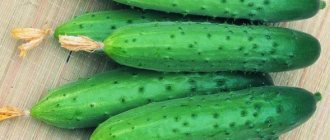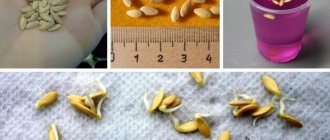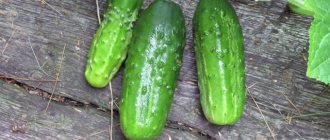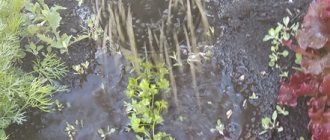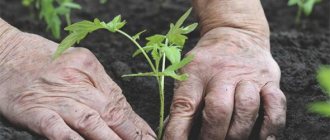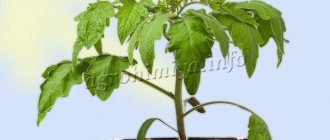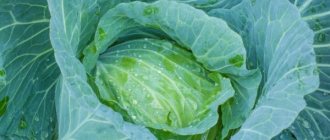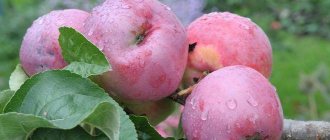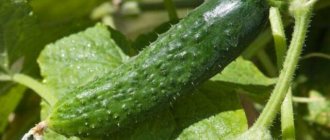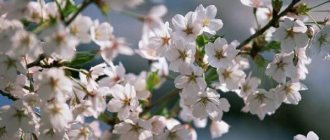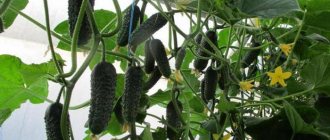It is worth starting the description of the Severin cucumber variety with information about its demand among vegetable growers. This hybrid has gained high popularity among gardeners due to its ability to produce a wonderful harvest over a long period of time. In addition, the variety can withstand uncomfortable weather conditions and is highly resistant to diseases and pests of vegetable crops.
Descriptions of cucumbers Severin
The producer of the Severin f1 cucumber variety is Enza Zaden from the Netherlands. The hybrid is intended for cultivation in film greenhouses in regions with different climatic conditions. Moreover, this hybrid is grown almost all year round. Excellent transportability and long shelf life allow this type of vegetables to be used for commercial purposes.
In terms of ripeness, the vegetable belongs to the ultra-early variety. The harvest is harvested 36-38 days after emergence. The productivity of the variety is quite high. Up to 17 fruits of excellent commercial quality are harvested from one bush in one harvest.
Severine cucumber plants form medium-sized bushes with the formation of small side shoots. The leaves are large, regular five-pointed in shape, dark green in color. It blooms with female flowers, producing 2-3 cucumbers in one axil.
The fruits grow in a cylindrical shape, 11-13 cm long, 3-3.5 cm in diameter and an average weight of 130-150 g. The surface of the greens has a lumpy surface and a dark green color. The pulp is juicy, aromatic, crispy.
The described type of cucumber belongs to the parthenocarpic type, like other products of the Dutch company - Cedric, Sigurd. The fruits of the Severin vegetable crop are universal in use. They are pickled and salted for the winter and consumed fresh.
Features of cold-resistant cucumbers
For the most part, these cucumbers are first-generation hybrids, produced with the F1 label. The thing is that it was possible to obtain plants with unique characteristics only through painstaking selection work, but the results are simply excellent.
Hybrids grow and bear fruit well in conditions of variable climate, frequent precipitation, and cold winds. They are not afraid of cold snaps, temperature changes, or shading. They are unpretentious in care, but with proper agricultural technology and fertilizing, the yield will be higher.
ON A NOTE! It is recommended to grow all of the listed hybrids through seedlings.
The review presents cucumbers used for salads, canning, pickling, and also for universal purposes. The choice is large: both in terms of fruit ripening, and in external parameters (shape, length of the greens), and in terms of the characteristics of the hybrid (bee-pollinated, parthenocarpic).
They are grown on ridges in the open air, under shelters, and in greenhouses. But thanks to their hardiness and cold resistance, almost all hybrids produce excellent harvests in the garden beds.
Landing Features
Severin cucumber plants are planted mainly in greenhouses using standard agricultural technology.
Landing dates
The Severin type of cucumber is planted almost all year round, as this hybrid has increased cold resistance and unpretentiousness to climatic cultivation conditions. The variety is suitable for both spring-summer and autumn-winter growing periods. Sowing of seed material is carried out from January 25 to September 15.
Site preparation
Since the Severin f1 variety is grown mainly in greenhouses and almost all year round, it is recommended to organize a so-called warm bed for them.
The soil in the greenhouse is dug up deeply, removing weeds and their roots, and high beds are formed. In the middle of the ridges, a furrow is dug along the entire length, approximately 2 shovels deep. The dug ditches are covered with straw or hay to a depth of 20-30 cm, then manure is poured in a layer of 20 cm, and dolomite flour is sprinkled on top to reduce acidity. Compact all layers of the bed well and bury them with soil. This creates a ridge that warms the cucumber plants from the inside.
Additionally, mineral fertilizers are applied per 1 square meter:
- wood ash 50 g;
- superphosphate 150 g;
- potassium sulfate – 50 g.
Planting seeds
It is recommended to plant seeds of the Severin variety in separate containers to obtain seedlings. No preliminary preparation of seed material is required, since the manufacturer has already treated the cucumber seeds with a special composition, including a growth stimulator and a drug that protects the variety from pests and diseases.
The seeds are sown in separate cups or peat pots with soil. It is advisable to use soil purchased from an agricultural store, as it is fertile, loose peat with the addition of all the substances necessary for seedling growth.
The soil is moistened and the seeds are buried into it at a distance of 1-1.5 cm. Containers with seedlings are placed in a dark place with an air temperature of +20-22 degrees.
Seedlings of Severin type plants should appear 6-7 days after sowing. After the sprouts emerge on the surface, the cups with seedlings are transferred to a more illuminated place, for example, on a windowsill. Watering plants is carried out only with warm water and only at the root. When 3-4 leaves appear on the seedlings, the cucumbers can be planted in a greenhouse.
Diseases and pests
Arina F1 has genetically built immunity to powdery mildew, cucumber mosaic virus, and olive spot. The hybrid is less resistant to root rot. To combat this disease, biological fungicides are used:
- Aparin-B;
- Glyocladin.
Covering the affected parts of the plant with coal or chalk powder helps against white and gray rot. When signs of powdery mildew appear, the bushes are treated with contact pesticide Hom, fungicides Topaz, Vectra or a solution of Bordeaux mixture.
Insect pests can also cause damage to crops. To combat spider mites and aphids, disinfection of greenhouses and greenhouses by fumigation with sulfur briquettes at a rate of 60 g/m³ is effective. Insecticidal preparations approved for use in garden plots (Actellik) help against whiteflies.
Arina F1 is an excellent hybrid for farms and gardens. This is a universal cucumber in terms of cultivation method and purpose with excellent taste and commercial qualities. If you follow the rules of agricultural technology and timely protection from pests and diseases, it is quite easy to obtain a stable and high harvest.
Planting seedlings
Cucumber seedlings of the Severin variety are planted in a pre-prepared, warm bed in the following way:
- dig holes 5-9 cm deep;
- moisten the holes for seedlings with warm water;
- transfer the plants into the holes along with a lump of earth from a cup;
- cover with earth, compacting it around the stem;
- water generously with warm water.
Planting scheme
The cucumber variety Severin f1 is planted using a standard scheme, allowing the cucumber bushes to freely accommodate and grow in favorable conditions.
Description of the scheme:
- the interval between rows of seedlings is 0.7-0.8 m;
- The distance between seedlings is at least 30 cm.
Description and characteristics of the variety
The hybrid forms strong, vigorous bushes with compact side shoots, and is distinguished by medium branching and foliage. The cultivar is actively grown in film and open beds, effectively self-pollinates and bears fruit for a long time until autumn.
The variety has the following features:
- is a productive parthenocarpic;
- ripens early - 43-48 days from the first shoots;
- forms many female inflorescences and bunched ovaries;
- 4-5 aligned gherkins grow in 1 node.
Beautiful crunchy fruits are used for fresh salads, added to sandwiches and snacks. Elastic gherkins make excellent lightly salted and pickled cucumbers.
- length does not exceed 6-8 cm;
- weight 50-70 g;
- diameter 2 cm;
- neat elongated shape;
- dark green color;
- medium-sized tubercles;
- pubescence is white;
- The pulp is crispy, moderately juicy.
Care
The cucumber variety Severin is unpretentious to growing conditions. The basic rules of agricultural technology should be followed, and the harvest will be excellent. The following care measures are recommended:
- watering;
- garter and formation of bushes;
- feeding;
- hilling.
Watering
Cucumber plants of the Severin type should be watered regularly, moderately, without allowing the soil to dry out or become overly moist. In hot summers, cucumbers are watered once every 2-3 days; in cold cultivation conditions, the frequency of watering is reduced. Humidification of plantings is carried out in the evening or morning and only with warm water.
Garter and bush formation
The Severin variety forms bushes of medium climbing, so the climbing stems should be tied to special devices - trellises. Use thin fishing line and twine for tying and direct the growth of cucumbers upward along them. This event will allow the fruits of the Severin species not to be laid on the ground, but to grow at a height from the surface of the bed, remaining clean.
The lower leaves on cucumber bushes need to be torn off, as they interfere with the normal growth of the crop. Stepchildren, of which an average number is formed, are also subject to removal.
Description of feeding activities
Cucumbers need nutritional supplements for good fruit set and a large harvest. The Severin f1 variety should be fed 1-2 times per season. Organic and mineral fertilizers are used as food.
The first fertilizing is done at the beginning of flowering, using the following mixture in 10 liters of warm water:
- 10 g potassium chloride;
- 20 g superphosphate;
- 10 g ammonium nitrate.
Pour 1 liter of this solution under each cucumber bush. The next feeding is carried out during the active formation of greens, with fertilizers containing nitrogen, potassium, and phosphorus. Complex mineral supplements are suitable.
Hilling
To protect the root system from drying out and from pests, as well as to give young plants of the Severin variety stability, it is recommended to hill up.
This event is carried out after watering or rain, only with wet soil. The earth is raked under the borage, forming a small ridge 5-7 cm high.
Ant F1
The variety appeared quite recently, but has already gained its share of popularity among gardeners. The main difference between “Ant” is that it can be grown both in open ground and in a greenhouse, even on the balcony!
1–1.5 months after the appearance of the ovaries, the first fruits appear. This variety is capable of producing up to 12 kg/m2 of cucumbers. Smooth and beautiful cucumbers are great for canning, although fresh they have a nice crunch.
Review from a gardener:
“When I was first advised to take Ant seeds, I considered it a waste of time. I don’t trust hybrids; I prefer my own, home-grown varieties. But having tried to plant “Ant”, I left the principle aside. In addition to the fact that this variety can be grown at any time of the year, the harvest is also rich. Self-pollination is especially pleasing, because there are fewer and fewer bees every year.” V.S. Butor.
Tell us in the comments what varieties of cucumbers you prefer. Perhaps it is your experience that will help a novice gardener get a rich harvest!
We invite you to read our article about
win-win varieties of tomatoes , also with reviews from summer residents.
Diseases and parasites
The cucumber variety Severin is resistant to many diseases and vegetable pests: downy mildew, cucumber mosaic, cladosporiosis. Descriptions of some diseases are given below.
Late blight
The disease is fungal. Appears from high humidity, the use of undisinfected equipment or contaminated seeds purchased by hand.
Late blight affects plants of the cucumber variety Severin as follows. Small brown spots form on the leaves, which then develop into larger ones. The stem of the cucumber bush and the fruits themselves are affected. The foliage turns yellow and dries out, the fruits rot and become unsuitable for food.
To prevent the development of the disease, it is recommended to regularly ventilate the greenhouse and monitor the temperature in it. It is also necessary to use only clean equipment and purchase seed material from a trusted supplier.
Spider mite
This dangerous insect is quite difficult to notice, since its body is 0.3-1 mm in size. Its invasion of the cucumber variety Severin f1 is detected by the white web entangling the borage foliage. The mite infects leaves and stems, sucking the juice from them, taking away energy and strength.
The color of the parasite can be different: white, orange, yellow.
The mite settles on the lower leaves, on their inner side and then infects the entire bush. If measures are not taken in time by treating cucumber bushes with fungicidal preparations, the plants may die.
Black flea beetle
A pest that causes great harm to cucumbers of the Severin variety is the black flea beetle. The dangerous insect is very small in size - 1.8-3 mm, black. The parasite overwinters in the top layer of soil, so the soil should be disinfected before planting cucumbers. The pest attacks young plants, jumping from one bush to another, eating leaves and stems. If cucumber bushes are not treated in a timely manner, the black flea beetle can destroy them completely.
